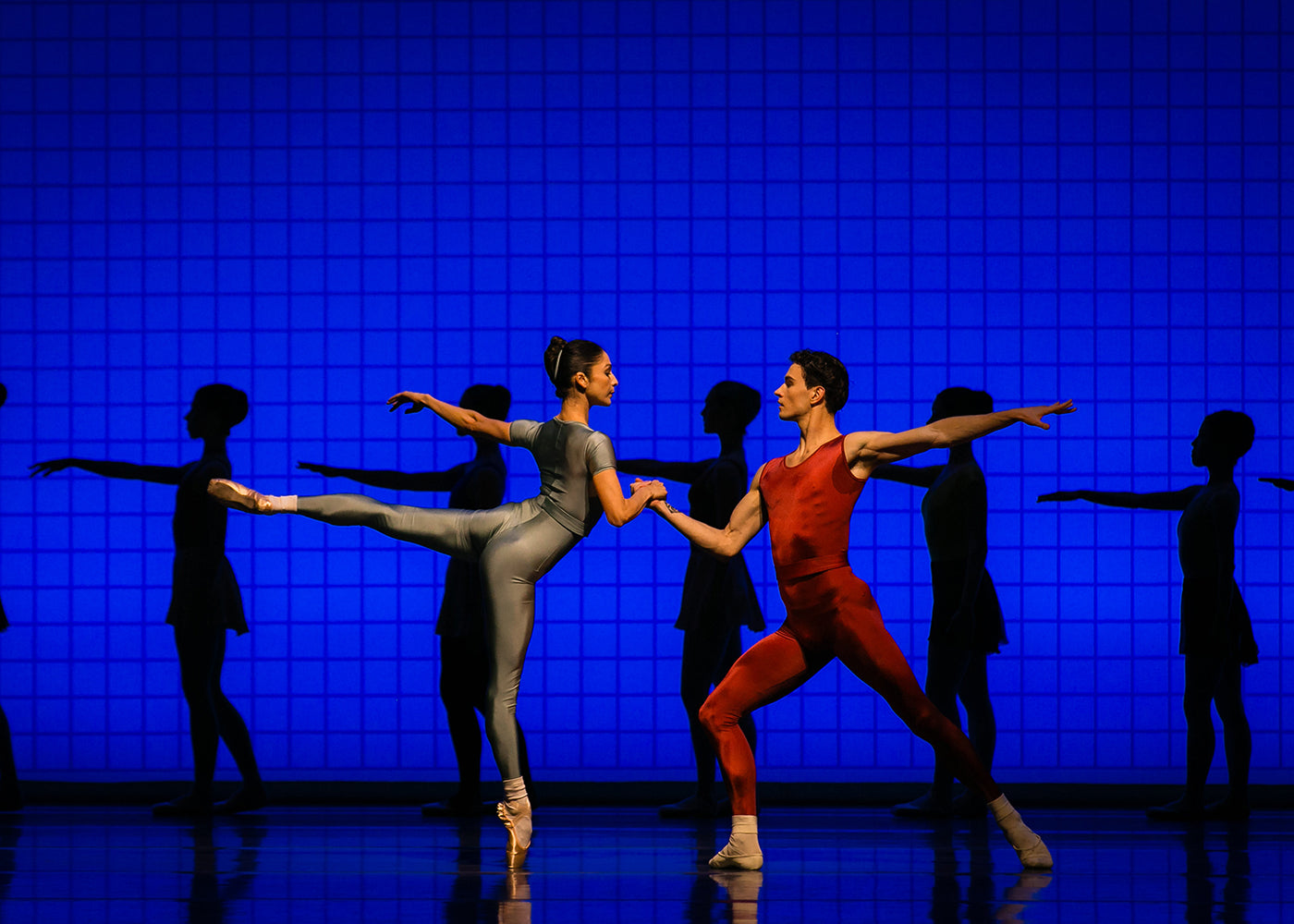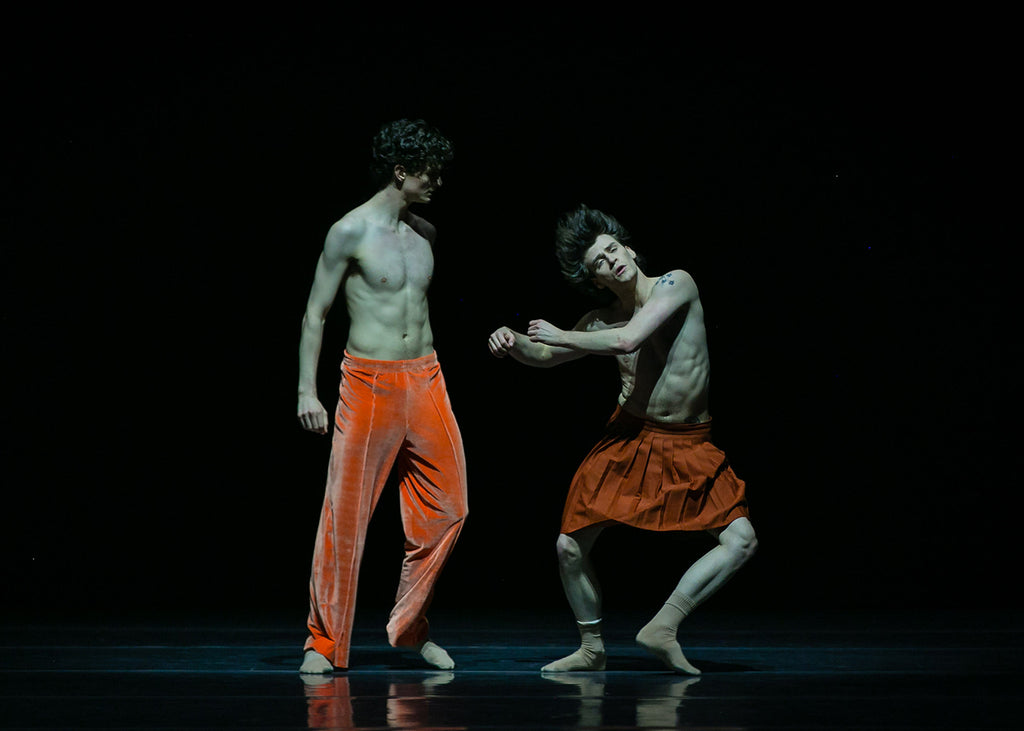Seven dancers, seven days, seven variations, and totality. Together, a week, they make, but not literally so, just as the score is Peter Brikmanis’s reimagining after J.S. Bach’s Goldberg Variations. To pared back staging, pared back music, space to breathe and interpret each of the seven movements is the focus, and the effect is hypnotic. At the foot of the stage, the dancers lie down. One after the other, they roll over, roll over, like the nursery rhyme. In a physical transference of energy, one by one, they take turns to roll over, roll over in the return direction, drawing a close to a day.
The orchestra, under the direction of guest conductor Charles Barker, click their fingers repeatedly and in doing so extend an “invitation to experience the familiar made strange.”[2] Several members of Orchestra Victoria tease at scrunched up balls of paper to create a crackle. Others blow and whistle, to conjure the sound of a windswept environment. Coupled with the audible breathing of the dancers, and the fragments gleaned of their conversations on stage as they meet in a circle, in the intimacy of Lake’s world premiere, “Seven Days,” I lap up the opportunity to see the great world spin anew.











comments